 |
Itinerary 1 (Half~ Whole day tour) |
 |
 |
MRT→Sugar Factory→Baiwu(White House) Artists Village→Museum→Traditional Street |
|
| |
 |
Take the Kaohsiung MRT red route to Ciaotou Sugar Factory station |
 |
| |
 Various Taiwan Sugar Corporation iced products are being sold at Zhongshan Hall next to the MRT Sugar Factory station; one can taste the famous red bean ice, and then start the journey to the sugar factory by renting a bicycle on the left side of the park area. Various Taiwan Sugar Corporation iced products are being sold at Zhongshan Hall next to the MRT Sugar Factory station; one can taste the famous red bean ice, and then start the journey to the sugar factory by renting a bicycle on the left side of the park area.
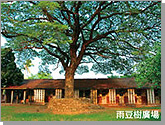 Set off from the store to the right towards Baiwu (White House) Artists Village, one can arrive at Singtang Primary School, and then take the bicycle path to the Flower Center of Taiwan Sugar Corporation; pedestrians can also take a mini train.On the left will be the public artworks and flower fields of the Sugar Industry Museum, while following the bicycle markings will lead one to a hundred year old sugar factory, as well as the ancient office and the Guanyin statue. Set off from the store to the right towards Baiwu (White House) Artists Village, one can arrive at Singtang Primary School, and then take the bicycle path to the Flower Center of Taiwan Sugar Corporation; pedestrians can also take a mini train.On the left will be the public artworks and flower fields of the Sugar Industry Museum, while following the bicycle markings will lead one to a hundred year old sugar factory, as well as the ancient office and the Guanyin statue. |
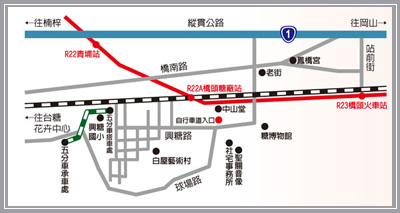 |
|
| |
|
| |
 |
Ciaotou Sugar Factory & Sugar Industry Museum |
 |
| |
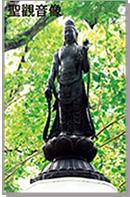 Ciaotou Sugar Factory was constructed in 1901, and was appointed as the county historical by Kaohsiung County Government in September 2002 with an area of 23 hectares. The Sugar Industry Museum was established in April 2006, with a Special Police Division set up within the park. Ciaotou Sugar Factory was constructed in 1901, and was appointed as the county historical by Kaohsiung County Government in September 2002 with an area of 23 hectares. The Sugar Industry Museum was established in April 2006, with a Special Police Division set up within the park.
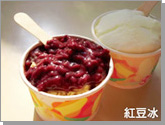 The dormitory region is now the Ciaotou Sugar station for MRT red route R22A; there are Japanese-style wood housings, rain tree performance square, reception, exqui red brick water tower and Singtang Primary School, turning it into a vital educational for people to learn about the historical relics from the Japanese era and the natural ecological environment; furthermore, it is also a popular for various movies scenes. The dormitory region is now the Ciaotou Sugar station for MRT red route R22A; there are Japanese-style wood housings, rain tree performance square, reception, exqui red brick water tower and Singtang Primary School, turning it into a vital educational for people to learn about the historical relics from the Japanese era and the natural ecological environment; furthermore, it is also a popular for various movies scenes. |
|
| |
|
| |
 |
Baiwu (White House) Artists Village |
 |
| |
 Baiwu (White House) used to be the reception for social events during the Japanese era; its sign can be seen when arriving at the outer wall of the red brick water tower. After the degeneration of the sugar industry, Baiwu (White House) was burnt down to ruins; however, with the reconstruction by local historical workers, it was able to be opened to the public again last year. Baiwu (White House) used to be the reception for social events during the Japanese era; its sign can be seen when arriving at the outer wall of the red brick water tower. After the degeneration of the sugar industry, Baiwu (White House) was burnt down to ruins; however, with the reconstruction by local historical workers, it was able to be opened to the public again last year.
The area is managed by a group of youngsters, where they try to maintain the natural scenery and merge decorative art with space aesthetics, in order for people to feel extremely tranquil and comfortable when in the Baiwu (White House) environment. One can see tourists gathering leisurely under the big trees, while the children play on the swings. The crocodile, mini train and robot on the side are made of disposed materials. |
|
|
|
| |
 |
Itinerary 2 |
 |
 |
Kaohsiung MRT red route Ciaotou Station →Traditional Street |
|
| |
| |
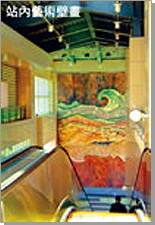 MRT Ciaotou station is by the train station, where a funny contrast forms between the modern station and the preserved ancient train station. The Meinong kiln ceramic wall paintings in Ciaotou station is the first station art created by domestic artists for Kaohsiung MRT. When exiting from the MRT station and walking towards Traditional Street, one can pay a visit to the Traditional Street ancient cinema, as well as taste the popular snack foods such as rice cake, rice with mince, A-Po thick soup, spring roll etc. This place turns into a busy night market in the afternoons; most of the houses on Traditional Street have already been renovated, so one will need to observe carefully to find the western architecture from the Japanese era; the Dai residence next to Fong-Ciao Temple is one of the rarely preserved houses. MRT Ciaotou station is by the train station, where a funny contrast forms between the modern station and the preserved ancient train station. The Meinong kiln ceramic wall paintings in Ciaotou station is the first station art created by domestic artists for Kaohsiung MRT. When exiting from the MRT station and walking towards Traditional Street, one can pay a visit to the Traditional Street ancient cinema, as well as taste the popular snack foods such as rice cake, rice with mince, A-Po thick soup, spring roll etc. This place turns into a busy night market in the afternoons; most of the houses on Traditional Street have already been renovated, so one will need to observe carefully to find the western architecture from the Japanese era; the Dai residence next to Fong-Ciao Temple is one of the rarely preserved houses. |
| |
|
| |
 |
Ciaotou Traditional Street |
 |
| |
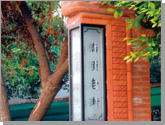 Ciaotou Traditional Street is located in between Taiwan route one and Taiwan railroad, and was known as Traditional Street during the period ruled by Qing Dynasty. There was a Yunguei Bridge on the street which was the intersection for people on business trips, and that was why Traditional Street became the center for the commercial market in Chiaotou. Ciaotou Traditional Street is located in between Taiwan route one and Taiwan railroad, and was known as Traditional Street during the period ruled by Qing Dynasty. There was a Yunguei Bridge on the street which was the intersection for people on business trips, and that was why Traditional Street became the center for the commercial market in Chiaotou. |
|
|
|
| |
 |
Snack food on Traditional Street |
 |
| |
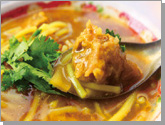 The delicious snack foods on Traditional Street are renowned for their low price, which are not to be missed out when paying a visit to Ciaotou. The famous snack foods include the minced rice; the exclusive curry tuna rice noodle in thick soup; the Ciaotou meat buns; the spring rolls even complimented by foreigners; the sausage and oyster donut; the hand-made sausages which are perfect for BBQ or as a gift; the 50 year old rice tube pudding and the pig intestine soup with four herbs are all recommended stores by delicacy shows! A walk in the Traditional Street will definitely satisfy the taste buds. The delicious snack foods on Traditional Street are renowned for their low price, which are not to be missed out when paying a visit to Ciaotou. The famous snack foods include the minced rice; the exclusive curry tuna rice noodle in thick soup; the Ciaotou meat buns; the spring rolls even complimented by foreigners; the sausage and oyster donut; the hand-made sausages which are perfect for BBQ or as a gift; the 50 year old rice tube pudding and the pig intestine soup with four herbs are all recommended stores by delicacy shows! A walk in the Traditional Street will definitely satisfy the taste buds. |
|
|
|
| |
 |
Ancient cinema on Traditional Street |
 |
| |
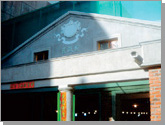 Ciaotou ancient cinema was established in the 39th Taiwanese year (1950) next to Chenggong South Road (Taiwan Route One) of the present days; it was relocated to No. 96, Ciaotou South Road of the present days with the raised fund from several people during the 43rd Taiwanese year (1954), which was operated by Mr. Li Ding-Fu. With the competitions from Ciaotou new cinema and the Sugar Factory Zhongshan Hall, the ancient cinema degenerated due to the change of time; it became the last cinema to have stopped operation in the 65th Taiwanese year (1976). Ciaotou ancient cinema was established in the 39th Taiwanese year (1950) next to Chenggong South Road (Taiwan Route One) of the present days; it was relocated to No. 96, Ciaotou South Road of the present days with the raised fund from several people during the 43rd Taiwanese year (1954), which was operated by Mr. Li Ding-Fu. With the competitions from Ciaotou new cinema and the Sugar Factory Zhongshan Hall, the ancient cinema degenerated due to the change of time; it became the last cinema to have stopped operation in the 65th Taiwanese year (1976). |
|
| |
 |
Recommended route for cyclers |
 |
| |
|
|
| Sugar Factory Station→ Cycling→ Sugar Factory→ Traditional Street→ Ciaotou’s first stage bicycle trail network→ Temple of the Lords of the Three Mountains→ Yisheng Farm→ National University of Kaohsiung→ Houjin River bicycle path→ Enjoy sunset at Yuanjhong Harbor |
 |
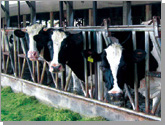 |
 |
|
|